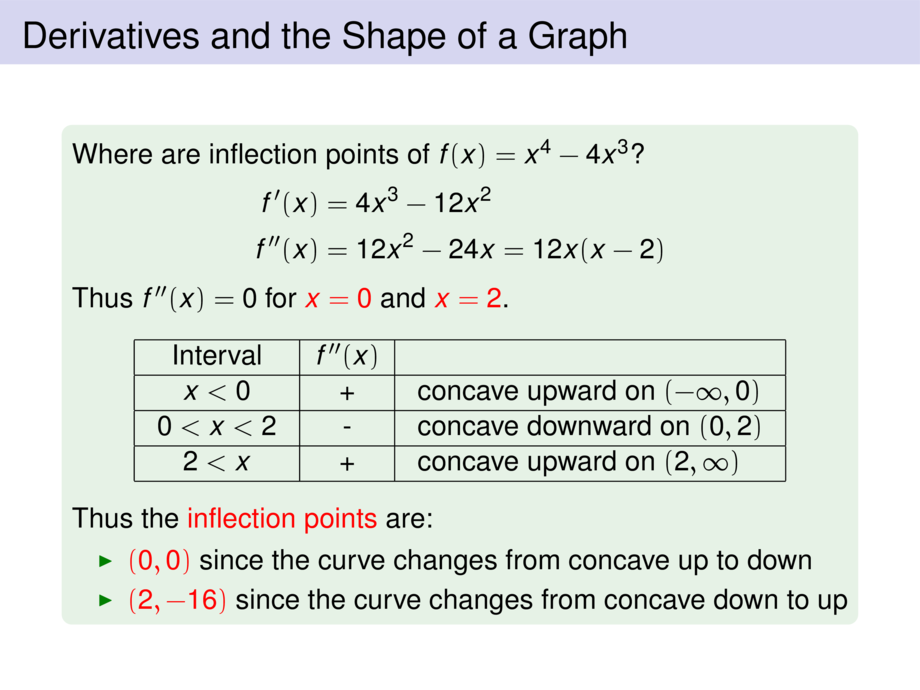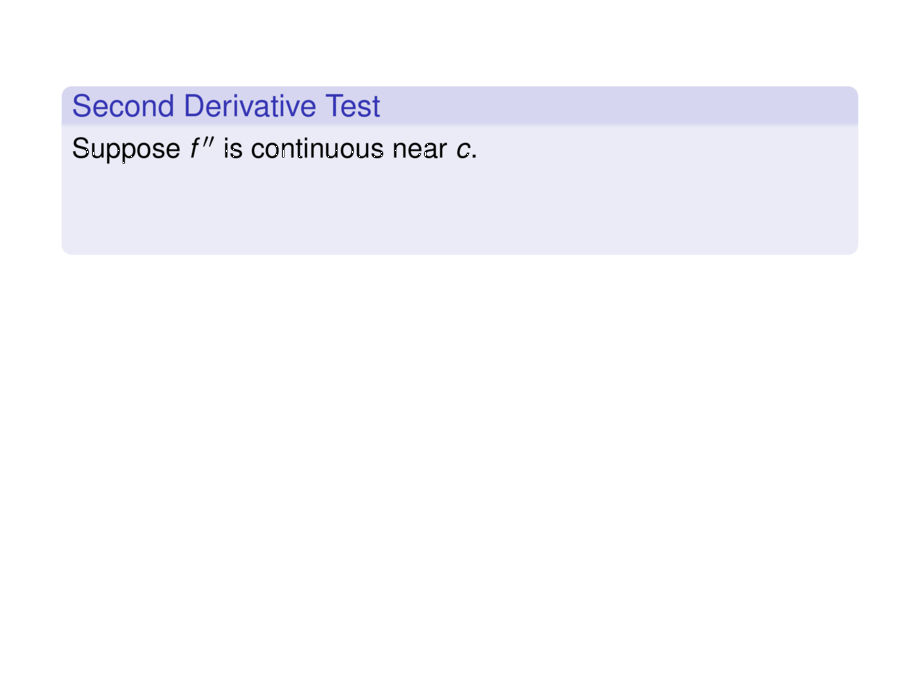



































































































118/158
\begin{frame}
\frametitle{Derivatives and the Shape of a Graph}
\begin{block}{Second Derivative Test}
Suppose $f''$ is continuous near $c$.
\begin{itemize}
\pause
\item If $f'(c) = 0$ and $f''(c) > 0$, then $f$ has a local minimum at $c$.
\pause
\item If $f'(c) = 0$ and $f''(c) <0$, then $f$ has a local maximum at $c$.
\end{itemize}
\end{block}
\pause
\begin{exampleblock}{}
Where does $f(x) = x^4 - 4x^3$ have local extrema?\vspace{-.6ex}
\pause
\begin{talign}
f'(x) &= 4x^3 - 12x^2 \mpause[1]{= 4x^2(x - 3)} \\
f''(x) &= 12x^2 - 24x = 12x(x - 2)
\end{talign}
\pause\pause
Thus $f'(x) = 0$ for \alert{$x = \mpause[1]{0}$} and \alert{$x = \mpause[1]{3}$}.
% These are the only critical numbers as $f'$ is defined everywhere.
\pause\pause
Second Derivative Test:\vspace{-.6ex}
\begin{talign}
f''(0) &= \mpause[1]{0} &
\mpause[2]{f''(3) &= } \mpause[3]{36} \mpause[4]{> 0}
\end{talign}
\pause\pause\pause\pause\pause
Thus $f(3) = -27$ is a local minimum as $f'(3) = 0$ and $f''(3) > 0$.\\
\pause\medskip
The Second Derivative Test gives \alert{no information for $f''(0) = 0$}.\\
\pause\medskip
However, the First Derivative Test \ldots \pause
yields that \alert{$f(0) = 0$ is no extremum}
since $f'(x) < 0$ for $x < 0$ and $0 < x < 3$.
\end{exampleblock}
\end{frame}

